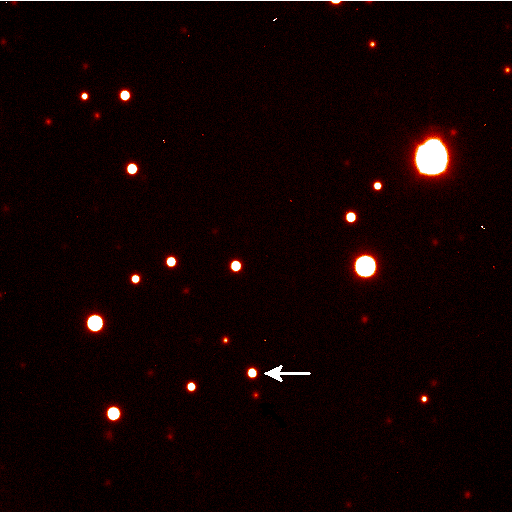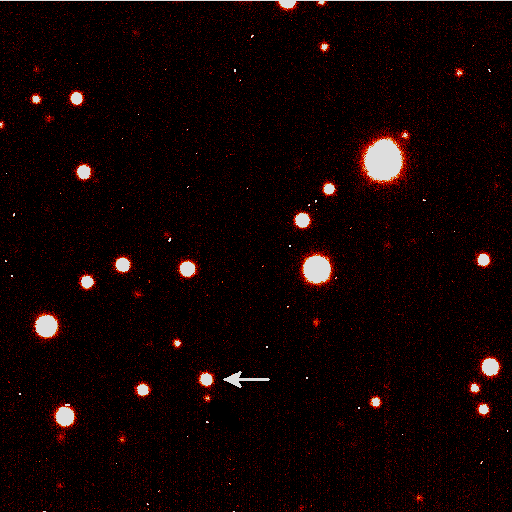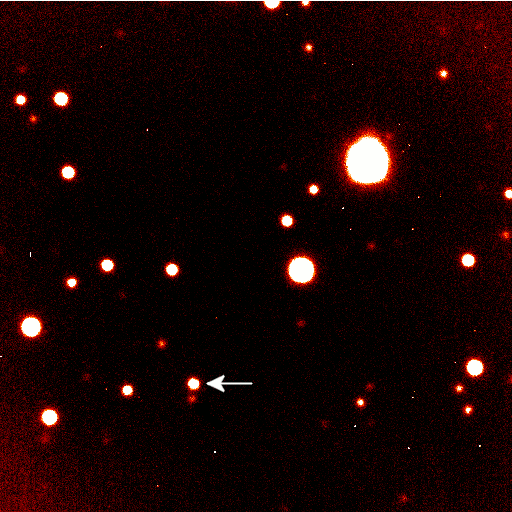Asteroid 2650 was discovered by M Wolf in Heidelberg on 14 March 1931.
It's original designation was 1931EG, but was named Elinor in my
honor by Dr. Brian Marsden for the work I had done at the IAU Minor Planet
Center in 1989.
On 8 Mar 1999 UT I took images of asteroid 2650 with the NIckel Telescope
at Lick Observatory, using Dewar #5, with a plate scale of 0.56 arcsec/pixel,
yielding a field of view of 4.4 arcminutes. The field center is at
approximately RA=07:48:29 Dec=+28:31:12 (J2000). North is up and
East is to the left in the images below. The motion of the asteroid
is clear in the sequence of images.

V-Band Image
5 minute exposure started at 4:47:51 UT

B-Band Image
5 minute exposure started at 5:08:08 UT

R-Band Image
5 minute exposure started at 5:19:09 UT, fog rolled in half way through
exposure.











